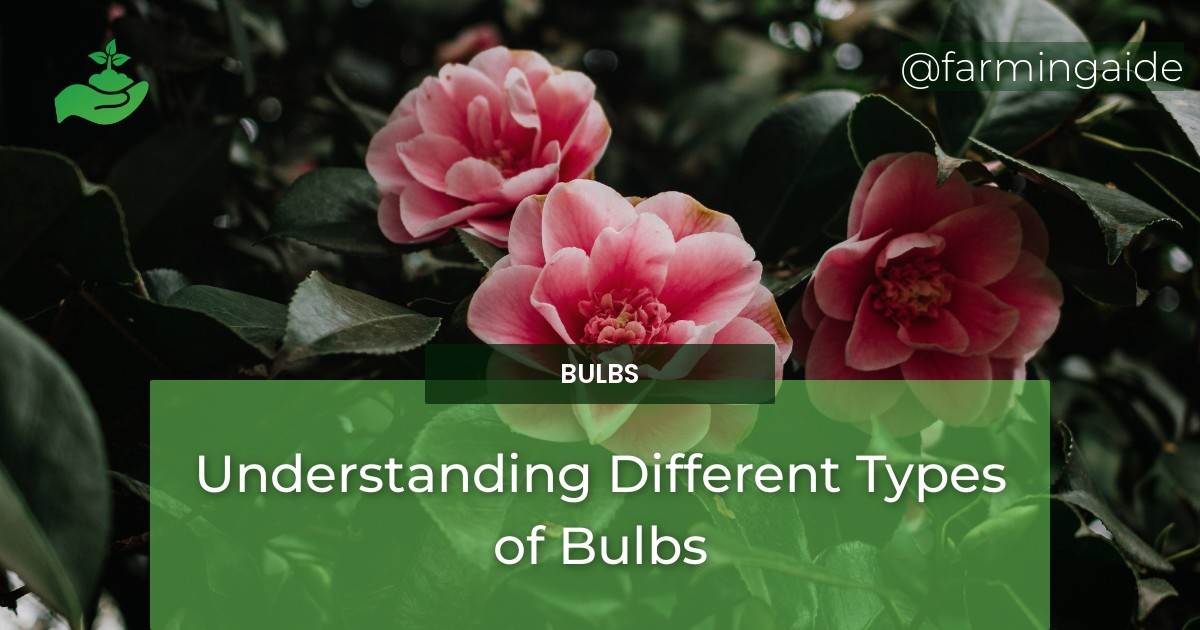Flower bulbs are a great addition to any garden as they bring a burst of color and life. However, with so many bulb types available, it can be challenging to know which ones to choose. In this article, we will be discussing the different types of bulbs, their benefits, characteristics, and how to classify them. By the end of this article, you will have a comprehensive understanding of bulbs and be ready to create a beautiful garden full of these stunning plants.
Benefits of Using Bulbs
There are numerous benefits of using flower bulbs in your garden. Here are some of the most significant advantages:
- Bulbs are easy to plant and require minimal maintenance
- They are available in a wide range of colors, shapes, and sizes
- Bulbs can be planted in various areas of the garden, such as borders, containers, and rock gardens
- They are an excellent source of food for bees and other pollinators
- Bulbs can naturalize, meaning they will multiply and return year after year
Types of Bulbs
Spring-Flowering Bulbs
Spring-flowering bulbs are a popular choice due to their vibrant colors and early blooming. Here are three of the most common spring-flowering bulbs:
Tulips
Tulips are one of the most beloved bulb flowers. They come in a wide range of colors, including red, yellow, pink, and purple, and have a distinctive cup shape. Tulips prefer well-draining soil and full sun.
Daffodils
Daffodils are another favorite spring-flowering bulb. They have a bright yellow color and often have a trumpet-shaped center. Daffodils prefer well-draining soil and can thrive in full sun or partial shade.
Crocuses
Crocuses are a small, delicate bulb that blooms in early spring. They have a cup shape and come in a variety of colors, including purple, yellow, and white. Crocuses prefer well-draining soil and full sun.
Summer-Flowering Bulbs
Summer-flowering bulbs are known for their bright colors and long-lasting blooms. Here are three popular options for your garden:
Gladiolus
Gladiolus is a tall, spiky flower that comes in a variety of colors, including pink, red, and yellow. They prefer well-draining soil and full sun.
Dahlias
Dahlias are a favorite among gardeners due to their wide range of colors and shapes. They can grow up to 6 feet tall and prefer well-draining soil and full sun.
Lilies
Lilies are a fragrant, elegant flower that comes in a variety of colors, including white, pink, and red. They prefer well-draining soil and partial shade.
Fall-Flowering Bulbs
Fall-flowering bulbs are a great way to extend the blooming season in your garden. Here are three popular options:
Colchicum
Colchicum is also known as autumn crocus and produces beautiful pink or purple flowers in the fall. They prefer well-draining soil and partial shade.
Sternbergia
Sternbergia is a bright yellow flower that blooms in the fall. They prefer well-draining soil and full sun.
Autumn Crocus
Autumn crocus is a delicate, pink flower that blooms in the fall. They prefer well-draining soil and full sun.
ALSO READ
Characteristics of Bulbs
When choosing bulbs for your garden, it’s essential to consider their characteristics. Here are some things to keep in mind:
Size
Bulbs come in various sizes, from tiny crocuses to large dahlias. Consider the size of your garden and the area where you want to plant bulbs when choosing their size.
Color
Bulbs come in a wide range of colors, so you’re sure to find one that complements your garden’s color scheme.
Bloom Time
It’s essential to choose bulbs that bloom at different times throughout the season to ensure that you have color in your garden all season long.
Shape
Bulbs come in a variety of shapes, from the cup-shaped tulips to the spiky gladiolus. Consider the shape of your bulbs when planning your garden’s aesthetic.
How do Different Types of Bulbs Differ in terms of Growing at Home?
When it comes to growing bulbs at home techniques, it’s important to consider the different types of bulbs available. For example, tulip bulbs thrive in cooler temperatures and require a period of cold dormancy, while daffodil bulbs prefer well-drained soil and ample sunlight. Understanding these differences is crucial for successful bulb cultivation.
Conclusion
Flower bulbs are an excellent addition to any garden, bringing color and life to your outdoor space. By understanding the different types of bulbs, their benefits, and their characteristics, you’ll be able to create a garden that’s both beautiful and low-maintenance. Whether you prefer spring-flowering bulbs like tulips and daffodils, summer-flowering bulbs like dahlias and gladiolus, or fall-flowering bulbs like colchicum and autumn crocus, there’s a bulb for every garden. Happy planting!


